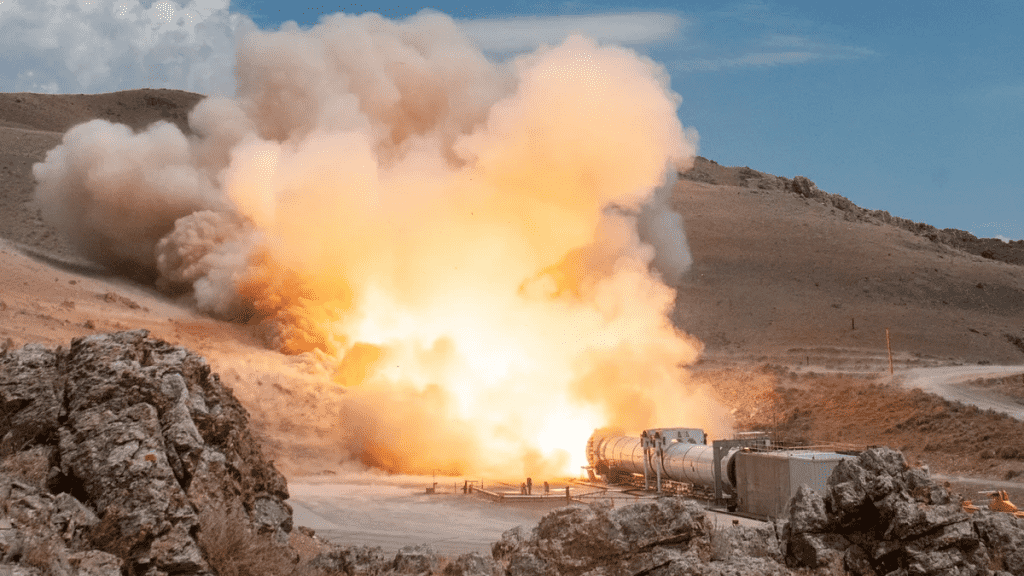NASA’s Space Launch System (SLS) will soon be ready to take flight for the space agency’s Artemis I mission.
Northrop Grumman has released video footage of a full-scale static fire test of the Flight Support Booster-2 that will help power SLS and the Orion spacecraft to orbit.
According to Northrop Grumman, the July 21 test took place at the company’s test area in Promontory, Utah. Northrop fired the booster for two minutes, making up to 3.6 million lb of thrust. Northrop’s engineers were able to test a new motor ignition system, materials, and an electronic thrust vector control system for the first time. These systems will be used in future Artemis missions.
“Continuous product improvements and obsolescence mitigation help NASA achieve its long-term mission to utilize SLS for its Artemis program,” explained Wendy Williams, vice president, propulsion systems, Northrop Grumman. “This opportunity for early learning on next-generation systems will help us develop an enhanced booster that is ready to support the greater payload demands of the SLS rocket through 2031.”
Artemis I mission will send the agency’s Orion spacecraft around the moon and back to Earth for a splashdown in the Pacific Ocean. Artemis II will perform the same feat with astronauts aboard. Artemis III, meanwhile, will be the first mission to take astronauts back to the moon’s surface since 1972. That mission will launch to the moon aboard a Starship launch vehicle rather than NASA’s SLS.
The Flight Support Booster-2 is smaller than the liquid-fueled booster core of SLS. However, both solid-rocket side boosters combined provide more than 75 percent of the thrust required to launch SLS for the Artemis I mission.

The Flight Support Booster-2 is 154 feet (47 m) tall, making it the largest solid rocket booster in the world. They are made of leftover booster segments initially built for the Space Shuttle program, though they will have 25 percent more total impulse. There are currently enough segments for eight Artemis missions.
Northrop Grumman will build new Booster Obsolescence and Life Extension (BOLE) boosters using segments left over from the canceled OmegA launch vehicle. This will enhance performance over the current models. If all goes to plan for NASA next month, we may finally be about to see the Flight Support Booster-2 help lift SLS into orbit.


